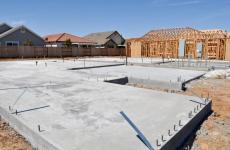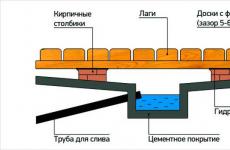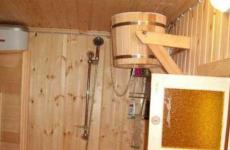Subject: Peat fires. Peat fires and their prevention
Forest and peat fires are natural fires.
forest fire- this is an uncontrolled burning of vegetation, spontaneously spreading through the forest area. Fires that cover large areas in a short period of time are called massive.
Forest fires are the most numerous sources of emergencies natural character. They account for up to 70% of all emergencies. Special science - forest pyrology - deals with the study forest fires and their features, the development of methods to combat fire and its consequences.
Underground, or peat fire- a fire that occurs in a peat layer located in the soil at a depth of several tens of centimeters to tens of meters. It is characterized by flameless burning of peat, accumulation of a large amount of heat and low speed of advancement.
In such a fire, a peat horizon burns with the roots of growing trees, which then fall and die.
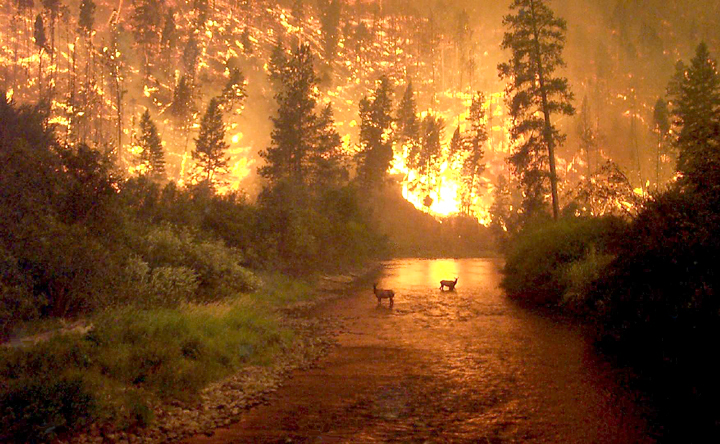
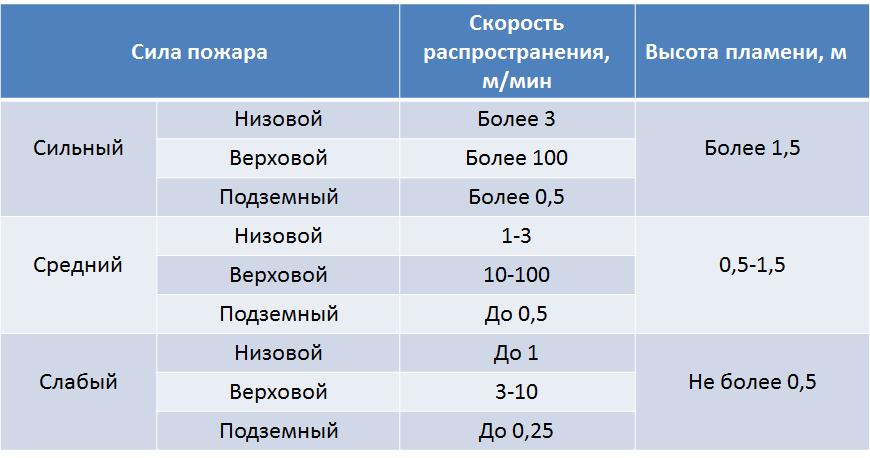
The main cause of forest fires is the irresponsible attitude of people who do not show due caution when using fire in the forest, especially during the fire season. According to statistics, 93% of all forest fires occur in a 10-kilometer suburban area, which means it is the fault of the local population.
Severe fires from a lightning strike are extremely rare, about 2% of the time, because thunderstorms are usually accompanied by rain.
Much more often, an abandoned burning match, an unextinguished cigarette butt smoldering after a shot from a hunter wad, lead to a fire in the forest. .
, thrown in the forest soaked in gasoline or kerosene cleaning material. A fire can be caused by refueling tanks of cars with the engine running, an unextinguished fire.
IN sunny weather bottles and glass fragments left in the forest focus Sun rays like incendiary lenses. That is why it is so important to be careful and attentive in the forest.
The primary damaging factors of forest fires are fire, heat air, poisonous gases generated during combustion, tree collapse and extensive smoke zones.
Forest fire can cause secondary damaging factors, especially if there are industrial facilities and settlements in the fire zone or near it.
The consequences of forest fires are very diverse. They render destructive action on forest resources, destroying the flora and fauna of the forest, causing damage to the organic layer of the soil, polluting the atmosphere with combustion products.
Forest fires can cause nearby objects to catch fire and, thus, lead to massive fires and the destruction of settlements, holiday villages, warehouses and storage facilities, poles and communication lines, power transmission lines, bridges and agricultural land. As a result, economic activity is disrupted in large areas.
Sometimes, from an ordinary forest fire, one of the most destructive natural phenomena- a firestorm, when a hurricane whirlwind of hot air suddenly forms in the center of the fire. Such a vortex, moving at a speed of about 200 km / h, easily overcomes open spaces, is thrown across wide rivers and turns everything in its path into ashes.
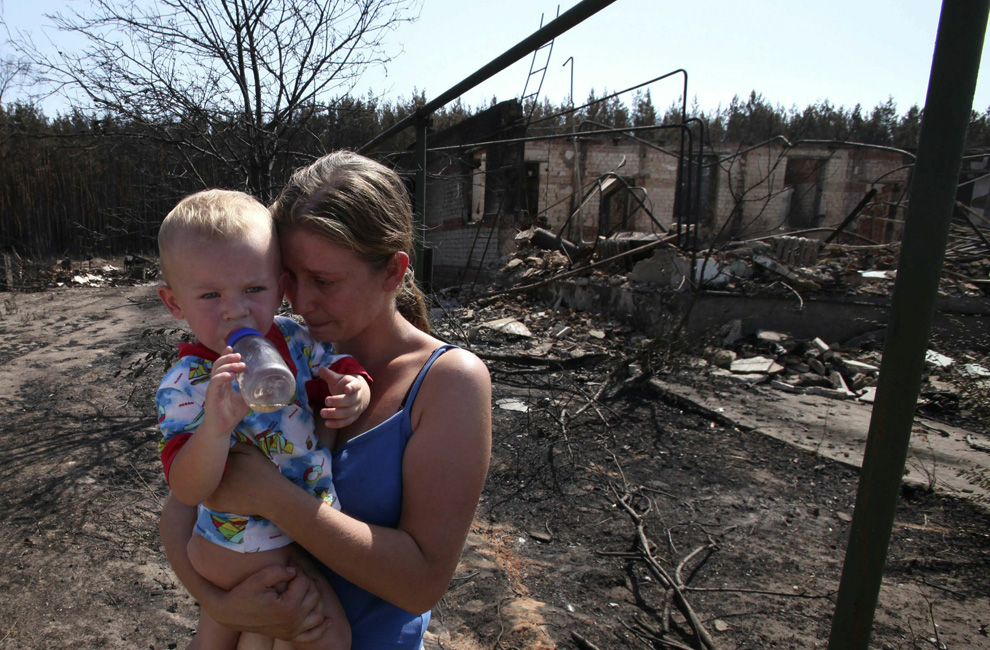
Forest and peat fire prevention and control
The prevention of forest and peat fires begins with the organization of monitoring of forest lands. Under constant surveillance in the so-called zone of active forest protection is 2D total area forest fund of Russia. This zone includes almost the entire European part of the country, as well as the southern and central regions of Siberia and Far East. Forest monitoring is carried out with the help of satellites, aviation and ground facilities. In other hard-to-reach areas, especially the northern ones, where it is very difficult to deliver forces and means, control is extremely difficult and is carried out sporadically.
The main role in the prevention of forest and peat fires is played by explanatory work, the education of respect for nature, the introduction of restrictions, and in a special fire hazardous situation, a complete ban on visiting forest lands.
With the onset of the fire season in the forest, the population is warned about this with the help of newspapers, radio, television, as well as visual aids posted in the most crowded places.
A number of early measures are being taken to limit the spread of forest and peat fires:
□ forest areas are divided into blocks isolated from each other;
□ deciduous trees are planted along the edges of the forest and along the roads;
□ in the forests, a network of fire roads is laid to the most dangerous areas of the forest and water bodies in terms of fire;
□ Sanitary felling of forest plantations is carried out.
To combat possible fires, the necessary forces and special means are being prepared.
The effectiveness of the fight against forest fires largely depends on the timely detection of fires and the prompt notification of the authorities and forces involved in the fight against forest fires.
To detect fires, visual observation of the forest is organized from stationary ground points (towers, masts) built in forest areas. Ground patrols are carried out on the most fire-prone forest areas, and air patrols are carried out by planes and helicopters from specialized air bases to control large forest areas. At these bases there are firefighters-paratroopers who can land in the area of a forest fire that has arisen.
There are two main methods of fighting forest fires: direct extinguishing and indirect extinguishing of fire.
Extinguishing forest and peat fires. Rules for safe behavior during fires and protection against them
In the fire season, a lot in the life of the forest depends on each of us.
Remember that during the fire season in the forest it is impossible:
□ throw burning matches and cigarette butts;
□ leave behind oiled or soaked in gasoline or machine oil cleaning cloths, bottles or pieces of glass;
□ use cars and motorcycles with a defective engine fuel supply system;
□ make fires in young coniferous forests, peat bogs, cutting areas with harvested wood, in places with dried grass. If need forces a fire to be built, then all measures should be taken so that the sparks from the fire do not fall on dry grass.
Forest and peat fires can pose a direct threat to the life and property of the population living in areas adjacent to forests. Residents of these settlements are notified via the local radio network about the fact of a fire, the direction of its movement and the level of danger of spreading to the residential sector. Leaflets with warning texts and information about necessary measures precautions.
In the event of an immediate danger to settlements, measures are taken to evacuate the population to safe places. How to prepare for evacuation, we have already discussed in the paragraphs "Floods" and "Hurricanes, storms, tornadoes." Valuable things, if there is time, it is advisable to transfer them to stone buildings without combustible structures, dugouts, free-standing cellars or simply to earthen pits, filling them with soil from above.
Under current law, persons guilty of violating the rules fire safety in the forests, depending on the severity of violations and their consequences, bear administrative or criminal liability.
The fight against forest and peat fires is primarily carried out by public services having forces and special equipment. However, these forces may not be sufficient, and local adults are often called in to help them. Persons under the age of 18 are not allowed to do such work, but everyone should know the rules of conduct and precautions.

Rules for safe behavior in the forest
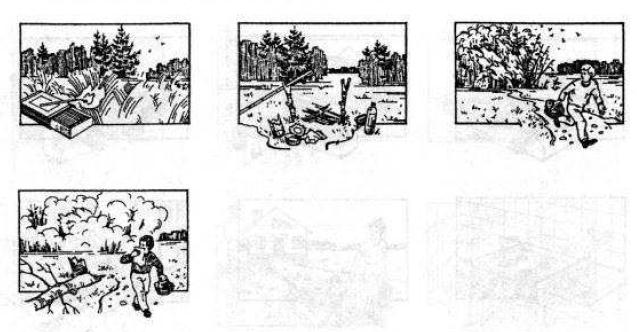
1. If it is necessary to build a fire in the forest, take safety measures to prevent sparks from falling on dry grass. Try to knock down a small fire that has arisen with branches or throw a pound.
Do not throw burning matches and cigarette butts into dry grass!
Do not make fires in places with dry grass and coniferous forests!
2. Do not leave bottles and glass fragments in the forest; flammable oily cleaning material.
Do not use a car or motorcycle with a faulty power system in the forest.
3. Leave the danger zone perpendicular to the direction of fire movement towards the wind.
4. If the air is very smoky, breathe through a wet cloth.
Remember: there is less smoke on the ground.
You can not run in lit clothes!
It is necessary to drop it or put out the fire by rolling on the ground.
A peat fire is a type of soil forest fire in which a layer of peat burns - a combustible mineral consisting of moss residues that have not completely decomposed in swamp conditions. The rate of spread of such a fire is several meters per day. Feature- the release of a large amount of smoke, which leads to smoke in large areas. To extinguish peat fires, digging in ditches is used, special water trunks are used, immersed in the soil; flooding of peatlands helps to prevent fire.
According to the Canadian energy company Peat Resources, Russia ranks second in the world in terms of peat reserves (150 billion tons) after Canada (170 billion tons). In the warm season, numerous peat bog fires are recorded in Central Russia, the Urals and Siberian federal districts.
IN 2009 peat fires began in the Orekhovo-Zuevsky district of the Moscow region already in the first days of May - a month earlier than usual. By the beginning of September, the Central Regional Center of the Ministry of Emergency Situations registered 20 thousand outbreaks natural fires on a total area of more than 1.1 million hectares.
The threat of their occurrence remained in the Moscow region and in the Chelyabinsk region, however, in general, the situation with forest and peat fires in Central Russia remained stable and under control.
IN July-August 2010 due to a sedentary anticyclone, anomalous heat has set in throughout the European part of the country, a record for more than 130 years of meteorological observations. In almost all regions of the Russian Federation, the air temperature approached the 40-degree mark, and in some areas it exceeded this indicator. Due to the extreme heat, the ecological situation worsened, peat and forest fires intensified - in total, 34.8 thousand sources of natural fires with a total area of about 2 million hectares were recorded, including more than 1 thousand peat.
In August, Russian President Dmitry Medvedev declared a state of emergency in seven regions of the country, where the situation was especially serious - in the republics of Mari El and Mordovia, Vladimir, Voronezh, Moscow, Nizhny Novgorod and Ryazan regions. According to the Ministry of Emergency Situations, in total, 17 regions suffered from fires and the smog caused by them, more than 2.5 thousand families were left homeless, more than 60 people died in the fire and from poisoning by combustion products, the damage was estimated at 85.5 billion rubles.
As follows from the report of the former Minister of Health and Social Development Tatyana Golikova, abnormal weather conditions in July and August 2010 affected total score mortality per year (in general, in 2010 the number of deaths increased by 20 thousand people, or by 1% compared to 2009).
IN 2011 in Central Russia, a significant decrease in the number (by 4.64 times) and the area (by more than 66.6 times) of forest fires was recorded compared to 2010. decreased by four times, and the area - by 24 times: in total, 588 seats of natural fires were registered on a total area of 220.36 hectares. Large-scale work was carried out to irrigate peatlands: in a year at 14 municipalities Moscow region was watered 34 peat plots with a total area of 22.2 thousand hectares.
During summer season 2012 almost ten times fewer natural fires were registered in the Moscow region than a year earlier. According to the government of the Moscow region, in June-August, 54 forest fires and only 4 peat fires occurred in the region. Work continued to prevent them: in 9 municipalities of the Moscow region, 21 peat plots with a total area of 31.1 thousand hectares were flooded during the year.
In June and July, a difficult fire situation, caused by abnormal heat and lack of precipitation, developed in a large area of the Siberian and Far Eastern Federal Districts, forests in the Krasnoyarsk Territory, Tomsk Region, Khanty-Mansiysk and Yamalo-Nenets Autonomous Districts were damaged. At the end of July, a strong smog was observed in Tomsk, Omsk and Novosibirsk, caused, among other things, by the burning of peat bogs.
According to the State Fire Service end of August 2013, the area of forest and peat fires in the Central Federal District increased by 48% compared to the same period in 2012, while the number of fires decreased by 24%.
On July 16, smog was observed in Perm due to a peat fire that broke out two days earlier on the lands of the state forest fund of the Zakamsky forestry. Peatland fires were registered in the Irkutsk region: from the end of September in Usolsky, at the end of October and November - in the city of Shelekhov. The fight against fires in the Irkutsk region continued in December - peat bogs continued to smolder even under snow cover.
Hot and dry weather summer 2014 increased the risk of peat fires in Central Russia. In the first half of the year in the Yaroslavl region, the number of forest fires increased by more than five times compared to the same period in 2013: by July 21, the Ministry of Emergency Situations registered 33 fires with a total area of 32 hectares (there were only 9 such fires a year earlier).
On July 23, due to a major fire on the territory of the Orshinsky peat deposit, a regime was introduced emergency in the Kalininsky district of the Tver region. On June 31, there were six centers of natural fires (one of them - peat) on a total area of 26.5 hectares.
The Central Regional Center of the Ministry of Emergency Situations reported that in other regions of the Central Federal District, the situation with forest fires, despite the heat, has not worsened. By July 31, there were no active natural fires and fires of peat bogs in the Moscow region.
- a type of forest fire in which a layer of peat and tree roots burn.
The fire spreads at a speed of up to several meters per day. When the soil burns out under the trees, the latter randomly fall.
The depth of peat burning is limited only by the level ground water or underlying mineral soil. Peat can burn even under snow.
Causes of peat fires
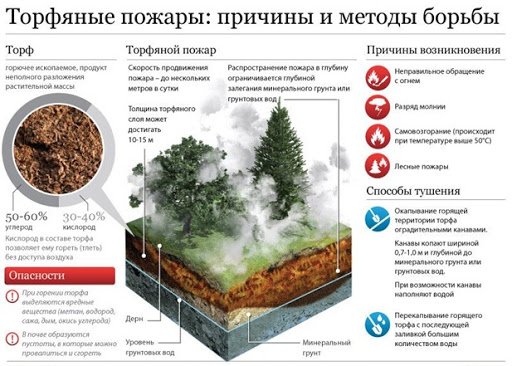
Spontaneous combustion of peat. Peat can ignite spontaneously if its moisture content is less than 40%. During the period of massive fires in Russia in 2010, the moisture content of peat was estimated at 28–30%.
anthropogenic factor. The cause of the fires is " human factor": thrown cigarette butts or matches, a fire built in the forest.
Lightning strikes. A significant (20-60%) percentage of fires is observed due to thunderous activity - in particular, "dry thunderstorms" (strike lightning no subsequent downpour).
The dangers of peat fires
Failures of people and technology
Peat fires create the danger of people and equipment falling into the burnt-out soil (burnout), and therefore it is recommended to be careful.
Peat slowly burns through to the entire depth, which can reach 6-8 meters or more. Burnt places are dangerous because sections of the road, houses, cars or people fall into them. In them, a high temperature remains for a long time after burnout, so a person who has failed in the area of \u200b\u200bpeat fire is doomed.
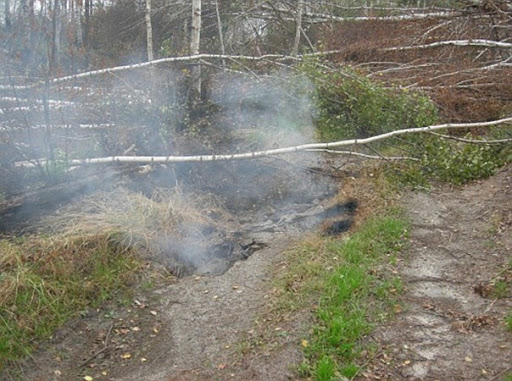 The road falls into the burning peat
The road falls into the burning peat
Falling trees with burnt roots
Outwardly, the trees under the smoldering peat bogs look intact, but because of the smoldering roots, the trees begin to fall unexpectedly.
Send your good work in the knowledge base is simple. Use the form below
Students, graduate students, young scientists who use the knowledge base in their studies and work will be very grateful to you.
Posted on http://www.allbest.ru/
Peat fires
Protection of peatlands from fires, timely localization and extinguishing of the latter are an urgent problem for many regions of the Russian Federation.
Peat fires are extremely dangerous, often accompanied by dense smoke and intense thermal radiation.
Emerging fires lead to large economic losses associated with the death of forest stands and fire fighting, they worsen the sanitary situation in adjacent settlements, are a source of bursts of carbon dioxide emissions into the atmosphere, and lead to landscape degradation and a decrease in biological diversity.
The area of peat deposits in Russia is 647.6 thousand km 2, peat reserves are estimated at 150-162 billion tons.
Every year, peat fires occur in peat extraction and unexploited peatlands.
Peat fires - a type of forest fire in which a layer of peat and tree roots burn
A specific feature of these fires is the flameless burning of peat with the accumulation of a large amount of heat. Peat fires occur most often in the second half of summer, when the peat dries up. The speed of spread of a peat fire is usually small - a few meters per day. Such fires are not affected by either diurnal weather changes or wind. They can last for months, even in rain and snow.
When burning peat, about 13 MJ/kg of heat is released, the temperature can reach 1000 °C. The resulting toxic combustion products can partially remain in the fire, rise into the air with convective currents, be carried by the wind, and settle on the surface of unburned areas of peatlands.
Peat fires cover large areas and are difficult to extinguish, especially large fires, when a layer of peat of considerable thickness burns. The main way to extinguish an underground peat fire is to dig in the burning peat area with protective ditches. They dig ditches 0.7-1.0 m wide and deep to mineral soil or groundwater. When conducting earthworks special equipment is used: excavators, graders, ditchers, bulldozers, and other machines suitable for this purpose. Digging starts from the side of objects and settlements that can catch fire from burning peat. The fire itself is extinguished by digging up the burning peat and pouring it with a very large amount of water, since the peat hardly gets wet. To extinguish burning piles, caravans of peat, as well as to extinguish underground peat fires, water is used in the form of powerful jets. Water is poured into places where peat burns underground and on the surface of the earth.
Therefore, the main attention should be paid fire prevention peatlands.
Fire prevention of peatlands provides for a set of measures aimed at preventing the occurrence of peat fires, limiting their spread and creating conditions for ensuring successful fight against them.
When choosing fire preventive measures, it is necessary to classify peatlands by type:
1) non-drained peatlands;
2) developed peat deposits;
3) partially depleted peat deposits;
4) fully depleted peat deposits.
fire fighting preventive actions applicable to all types non-drained peatlands:
1. Creation of fire barriers in forest areas with an underdeveloped road network around peat bogs.
2. Laying of mineralized strips around peat bogs.
3.Laying fire channels.
4. Arrangement of forest roads. Depending on the purpose, forestry and fire-fighting forest roads are arranged. Forestry roads are arranged mainly in developed forests with intensive forestry in areas where these roads are needed not only to fight forest and peat fires, but also for other forestry needs and will be widely used.
The device of fire reservoirs.
2. Developed peat deposits.
A set of measures for fire safety at operating enterprises carried out in accordance with PPBO-135-80. Fire fighting measures include the formation fire brigade, equipment fire fighting equipment, ensuring the operation of the system fire water supply, including hydraulic structures (fire channels, reservoirs, locks, etc.).
Uses of degraded peatlands are determined at the design stage, taking into account quality characteristics of disturbed lands according to the technogenic relief, the nature of watering (humidification), taking into account the geographical and economic conditions of the area where the disturbed lands are located, technical, economic and social factors.
The main directions for the use of depleted peat deposits.
Industrial use is expedient in case of resumption of peat extraction in partially depleted peat deposits.
Afforestation of depleted peat deposits is expedient on completely depleted peat deposits.
Re-bogging of depleted peat deposits is expedient in areas unsuitable for the creation of forest crops, and areas with increased fire hazard.
Existing means of combating peat fires are not enough for their localization and elimination, as well as for minimizing the damage from them. To improve security settlements during peat fires by the author A.G. Chvertkin proposes to apply new method- an underground protective wall, which should ensure the impossibility of the passage of a peat fire to the settlement.
Figure 1 shows general principle underground protective wall, top view, and in Figure 2 - side view.
A wall made of durable heat-resistant material is buried deep into the peat to the groundwater level, preventing the peat fire from spreading. The width of the underground protective wall will depend on the thermal conductivity of the material, and, on average, ranges from half a meter to 1 meter.
Figure 1 Underground protective wall (top view)
fire peat extinguishing protective
Figure 2 Underground protective wall (side view)
Hosted on Allbest.ru
Similar Documents
Features and danger of peat fires, their causes. Identification of grass burns on the surface of peatlands. Technology of peat bog extinguishing at an early stage and during its prolonged burning. Instrumental verification of extinguishing reliability.
abstract, added 03/17/2016
Classification of forest fires according to the nature of the spread of combustion. Fire hazard in open forest areas. Stages of work to extinguish a large forest fire. Causes of occurrence, classification of peat fires, methods and means of extinguishing them.
abstract, added 12/15/2010
Study of the features of external and internal fires in buildings. Analysis of the paths and speed of flame propagation. Study of the main causes of fires. Types extinguishing agents and materials. The nature of the spread of forest and peat fires.
control work, added 12/14/2014
Air patrolling, space monitoring and ground fire detection. Study of the influence of environmental factors on fire. Peculiarities of extinguishing peat bogs, ground and crown forest fires. Technique and equipment of fire brigades, security measures.
abstract, added on 01/07/2017
Concepts of fire and fire safety. Causes and characteristics of fires, their impact on human health and livelihoods. Methods and means of extinguishing household and forest fires, eliminating their consequences and prevention measures.
abstract, added 03/06/2015
Forest fire and its types: grassroots, riding, underground, steppe. Analysis of forest fires in Primorsky Krai. Tactics and methods of localization when extinguishing various forest fires. Additional measures to prepare for a fire hazard period.
term paper, added 04/16/2014
Classification of natural fires. The rate of spread of ground and crown fires. Factors affecting the behavior of fire. Techniques and methods of fighting forest fires. Advantages of using field main pipelines for fire fighting.
abstract, added 12/10/2014
The main causes and properties of fires. Spontaneous combustion, ignition, flash and combustion temperature. Categories of industries and premises by fire and explosion hazard. Fire requirements, means of extinguishing and detecting fires, types of fire extinguishers.
course of lectures, added 04/29/2010
Types of fires, features of their occurrence on open area. Studying the development of fires in timber warehouses, oil and gas transportation facilities. Organization of extinguishing fires in peat fields, deposits, gas and oil fountains.
thesis, added 05/30/2014
Spontaneous, uncontrolled spread of fire in forest areas. Ecological role of forest fires. Job fire fighting services control over compliance with fire safety regulations. The main causes of fires. Goals of controlled fires.
In the summer of 2010, in the central part of Russia, due to abnormal heat and lack of precipitation, peat fires. There was a strong smog in Moscow.
Peat fires near Moscow were accompanied by the smell of burning and heavy smog in Moscow. The concentration of pollutants exceeded the limit several times, including carbon monoxide - more than 7 times. Half the city wore gauze bandages, which were in high demand. The strongest fires were recorded in the Ryazan and Nizhny Novgorod regions. Mordovia, Sverdlovsk, Kirov, Tver, Kaluga and Pskov regions also suffered. The primary cause of fires and the appearance of smoke and smog was prolonged heat, which began in May, and the absence of precipitation. In addition, a critical situation was led by the ongoing in 1920-60s as part of the plan of the State Commission for the Electrification of Russia extraction of peat by draining swamps in the central part of Russia. Subsequently, the peat developments began to close, but were not filled with water. After the series major fires in the summer of 1972, the peatlands began to flood. But in the early 1990s, these works were stopped, which led to the re-emergence of fires in 2002. Spontaneous combustion of peat can lead low humidity- less than 40%. And yet, the cause of 90% of peat fires is the human factor: discarded unextinguished cigarette butts and matches. Difficulty in extinguishing peat fires that the fire takes place underground. Accordingly, it is necessary to bring water to a layer of peat. However, as a result of combustion, peat becomes hydrophobic, that is, water passes past the peat into the depths.
Features of peat fires
Peatlands are swamps, where, due to high humidity and the lack of oxygen, the plants do not decompose completely, but form a homogeneous brown mass - peat. Peat fires spread very slowly and can last for several years.
Peat bogs burn very rarely, because the lower layers of peat, even in the hottest period, are in the water. The source of a peat fire is almost always a person. He leaves unextinguished fires, throws unextinguished cigarette butts and matches. Fires are often caused by sparks from cars and motorcycles. A peat fire does not start immediately, it takes a long time from the onset to detection, so its culprits often remain unknown. One of the main causes of peat fires in recent years is spring fallen dry grass.
The particular danger of a peat fire in the first place is great smoke, which can be hundreds and thousands of times greater than the amount of smoke from a conventional fire. In addition, the smoke from peat fires does not rise up, but stays down. It can spread over hundreds of kilometers. And the consequences of this smoke are reflected on us. For example, in a few weeks of smog in Moscow, the death rate doubled. Secondly, peat fire can last a very long time, and if you do not put it out at the very beginning, it is extremely difficult to do it later. Complications are introduced by the fact that drained peatlands were often given over to horticultural associations. And in the event of a fire, the fire leads to human casualties.
Another feature of a peat fire is that the peat itself practically does not burn. It just smolders, highlighting a large number of smoke. The speed of such smoldering is not more than a few tens of centimeters per day. As a rule, a peat fire covers only the upper layers up to 30-50 cm deep. Smoldering peat continues in winter. Since peat is highly insulating, everything is still warm a few centimeters deep. Only when the snow melts in spring can the fire stop.
To extinguish a peat fire at an early stage, it is necessary to dig up smoldering peat, take it to the nearest reservoir and mix it with water. In the absence of a reservoir, peat can be mixed with sand or clay. When extinguishing a deep peat fire, it is necessary either to flood the burning area, or to dig deep ditches filled with water around the burning peat. After the work on extinguishing the fire, it is necessary to check within a week whether the fire has really been extinguished. To do this, it is necessary to determine the temperature and humidity of the peat: it must be cold and wet.

